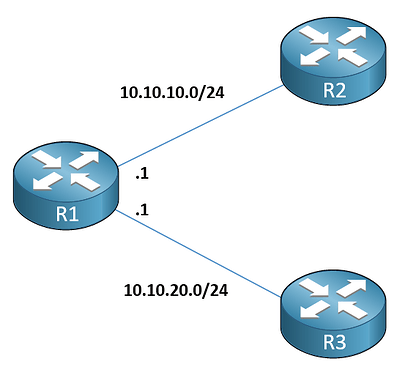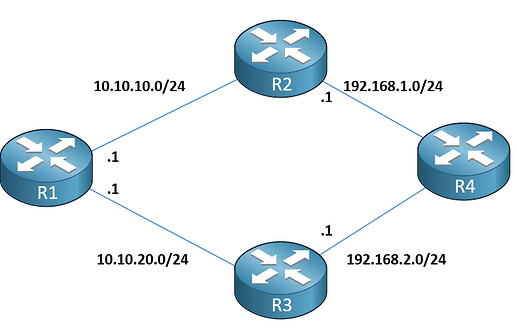Hello Justin
You are correct. OSPF will advertise a default route to neighbors, and will use the IP address of the interface out of which the advertisement was sent. For example, take a look at this diagram:
R2 would receive an advertised default route with a next hop IP of 10.10.10.1 while R3 would receive an advertised default route with a next hop IP of 10.10.20.1.
Now if you add R4 downstream, what would happen? Take a look at this diagram:
What default route and next hop would appear in R4? What will happen is actually completely independent of the default-information originate always command on R1. The resulting next hop address in R4 for the default route will simply follow the rules of OSPF path selection.
The shortest path will take precedence. If that is via R2, then the next hop IP of the default route will be set to 192.18.1.1. If it is via R3, then the next hop IP of the default route would be set to 192.168.2.1.
If the cost to both R3 and R2 is the same, then equal cost multipath (ECMP) routing will take place, and both paths (via 192.168.1.1 and 192.168.2.1) will be placed in the routing table. If ECMP is disabled or not supported, then the highest router ID of R2 and R3 will be chosen as the best path. Does that make sense?
I hope this has been helpful!
Laz

